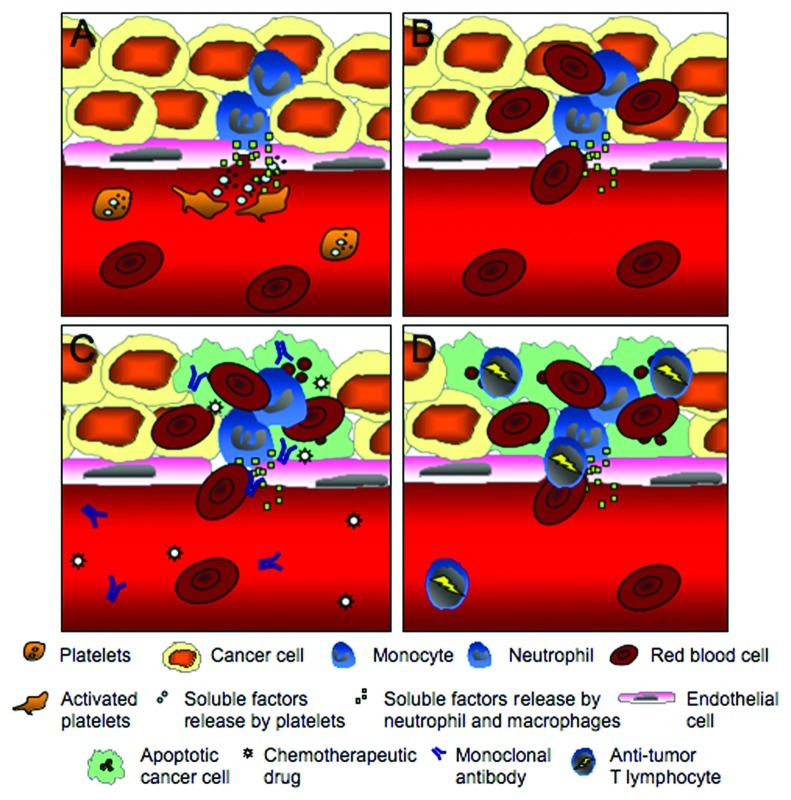Figure 1.
Thrombocytopenia-induced tumor hemorrhage improves drug delivery to tumors. (A) By releasing their granule contents, platelets counteract the injurious effect(s) on the vasculature induced by neutrophils and monocytes infiltrating the tumor. (B) In the absence of platelets, tumor hemorrhage is observed. (C) Generation of openings in the tumor vasculature during thrombocytopenia provides a better access for circulating drug to enter and accumulate in the tumor. The vessels’ breaches would also allow a higher tumor antigen visibility and the use of tumor specific agents such as monoclonal antibodies could result in an even higher accumulation and efficacy. (D) Immunotherapies inducing anti-tumor specific T lymphocyte activation could also potentially be improved during thrombocytopenia. A greater access and visibility of the tumor antigen would result in an increase in intratumoral accumulation of activated anti-tumor cells and improve treatment efficacy.

